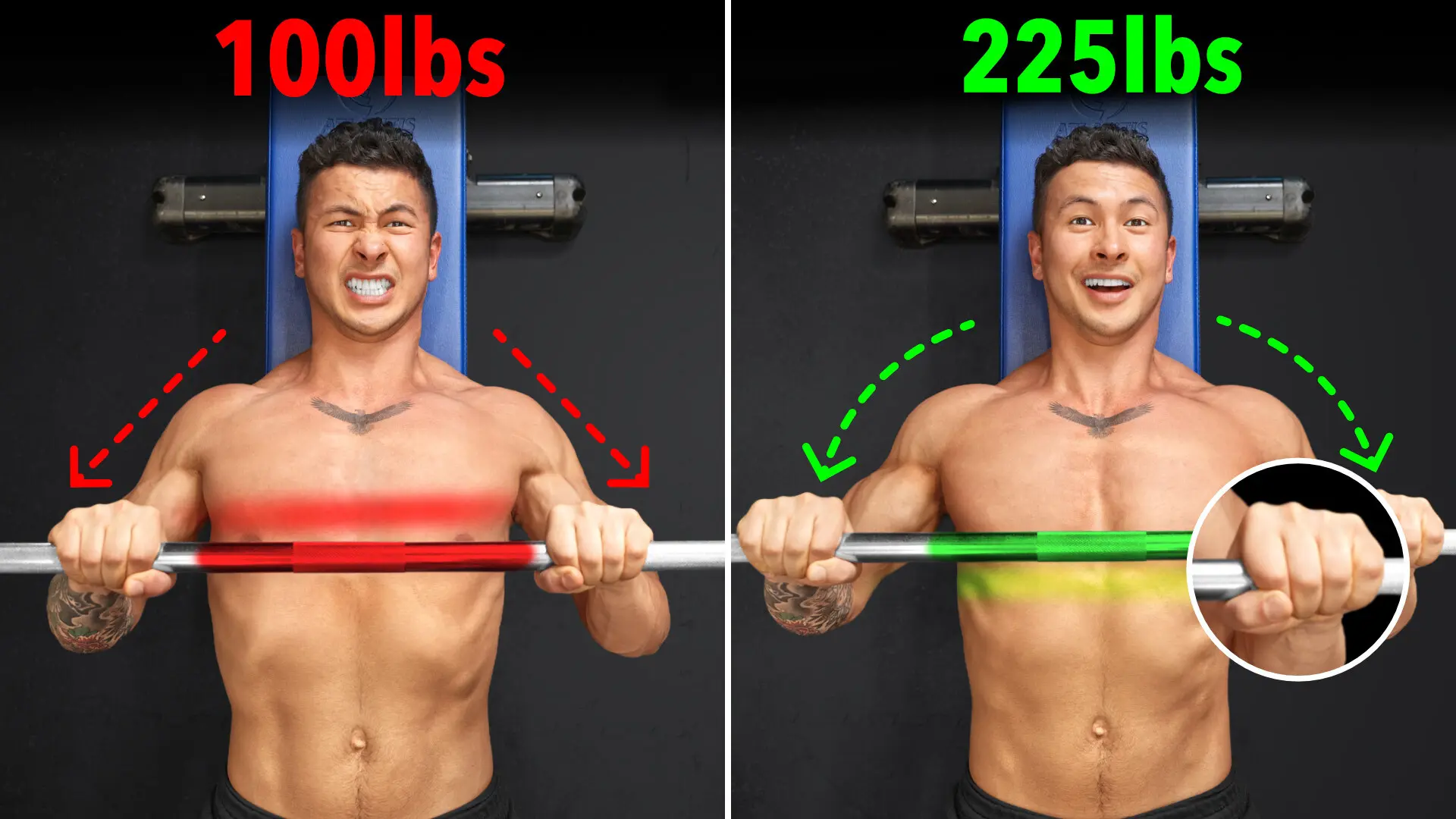
How Often Should You Train Each Muscle To Maximize Growth?
If you want to learn how to optimally organize your training schedule to maximize growth, then you need to read this article.
One of the most hotly debated topics within the fitness industry is training frequency – more specifically, how often should you train each muscle group per week. Many advocate that a training frequency of 1x/week is best, whereas others favour a higher frequency approach and believe it to be superior in terms of maximizing growth.
For example, a recent 2013 survey of 127 competitive bodybuilders found that ~69 % of respondents trained each muscle group once per week while the remaining ~31 % trained muscles twice or more weekly.
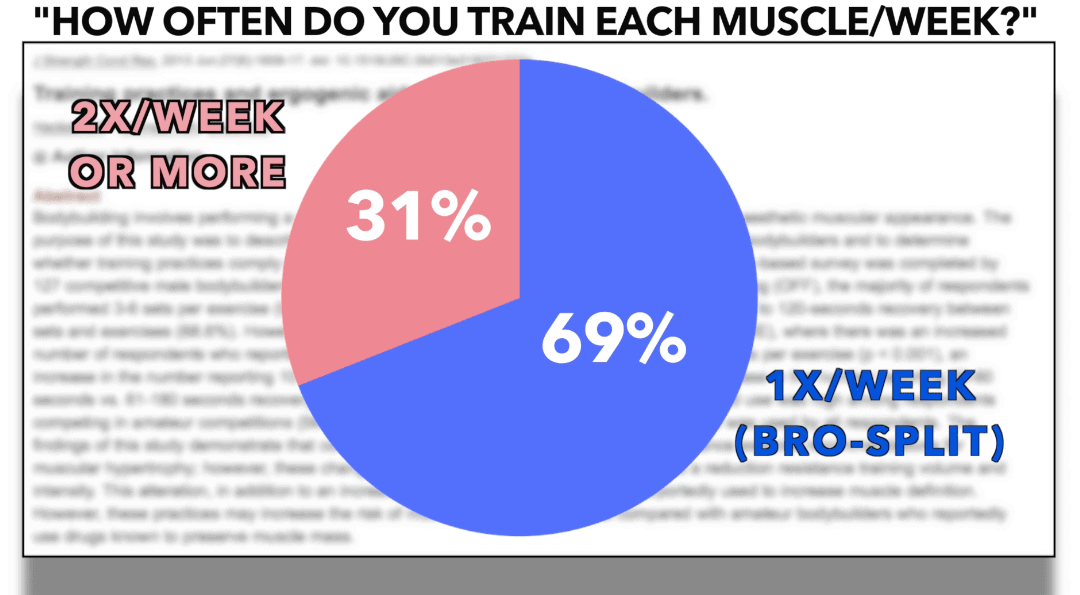
So while it’s evident that you will see results regardless of what training frequency you use, the question now though is what’s optimal?
And to figure that out, we need to look at the research.
If you appreciate science-based training insights like this, you’re going to love the BWS programs. I’ve designed every single one of them to contain valuable knowledge on why (exactly) you’re training the way you are. This way, you’ll gain a deeper understanding of optimal lifting principles – while experiencing the quickest gains possible. If you’re interested:
Click the button below to take my analysis quiz to discover the best program for you:
↓
What Research Says About Training Frequency
Luckily for us, researcher Brad Schoenfeld recently published a 2016 meta-analysis covering exactly what we're looking for.
They collected 10 different studies and compared training each muscle 1x per week versus training each muscle with higher frequencies of 2 or 3 times per week. The researchers analyzed the effect the different training frequencies had on muscle growth.
The result?
As shown below, every single study showed a benefit to training with higher frequencies:
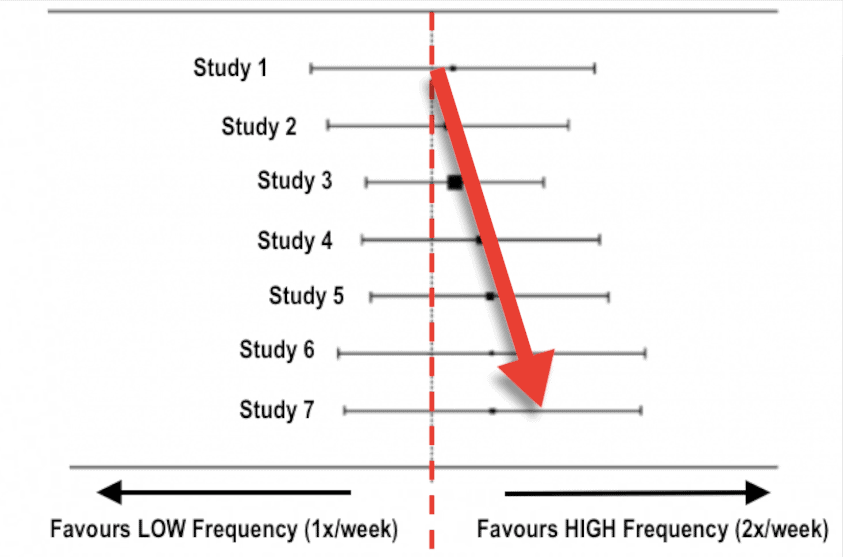
In fact, training each muscle 2 or 3 times per week resulted in 3.1% greater muscle growth than training each muscle just once per week.
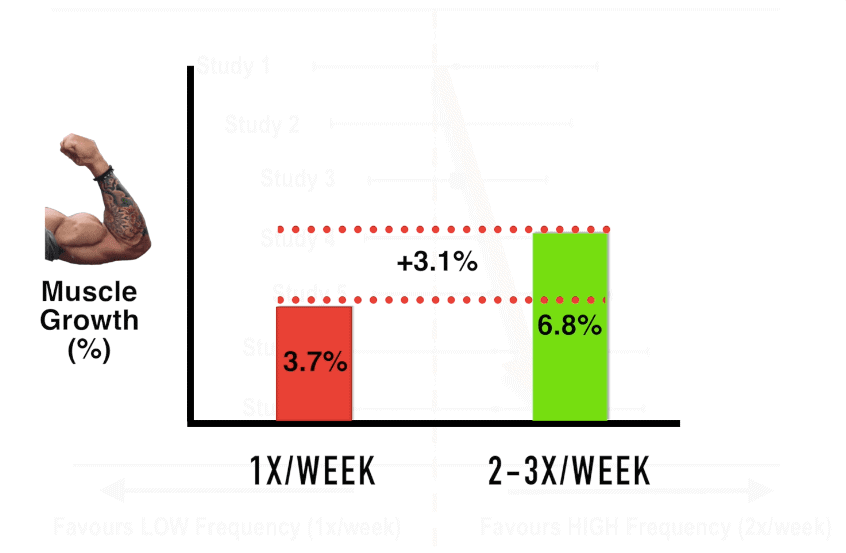
And since total workout volume, exercises, and rest between sets were equated for all the studies included in this analysis...
...it’s very likely that the difference in training frequency is indeed what caused that extra 3.1% muscle growth.
Now, just to put this 3.1% number in perspective - this seemingly minuscule number could actually result in roughly an extra lb of muscle gained for a beginner after their first year of training.
Which may not sound like a lot, but definitely would be a noticeable difference.
Higher Frequency = More Growth?
So, based on previous analysis, we know at the very least that training each muscle a minimum of 2 days a week is needed to maximize muscle growth. And as for whether or not frequencies higher than this would be beneficial, it’s relatively unclear at the moment.
However, it does seem as if more may not be better.
For example, this recent 2017 paper compared training each muscle 2 days per week versus 4 days per week. Weekly volume was equated between groups.
The researchers found that after just 6 weeks, the 2x/week training frequency group experienced greater upper body gains than the 4x/week group.
Therefore indicating that sticking to training each muscle group around 2x/week is probably going to be your best bet.
But wait. How does that actually apply to you - and your specific training goals? f you wish to get more guidance on this, don't worry. Our 3-on-1 coaching program can help. You are going to have a coach to focus solely on your training and making all your workouts customized to you, your goals, and the equipment you have available. A dietitian and I will also be available to guide you every step of the way. If that sounds good to you, then:
Click the button below to find out more about the 3-on-1 coaching program:
↓
The Protein Synthesis Theory
Now as for the reasoning behind this, it likely has to do with something called muscle protein synthesis. Which is essentially the process your muscles goes through after a workout in order to build additional muscle mass.
And, based on the literature we know that after a resistance training workout protein synthesis remains elevated for roughly 36-48 hours in most individuals.
So if you were to train each muscle group just 1x/week, you can see how you wouldn’t be optimizing the protein synthesis response by not stimulating the growth process as frequently as you could be.
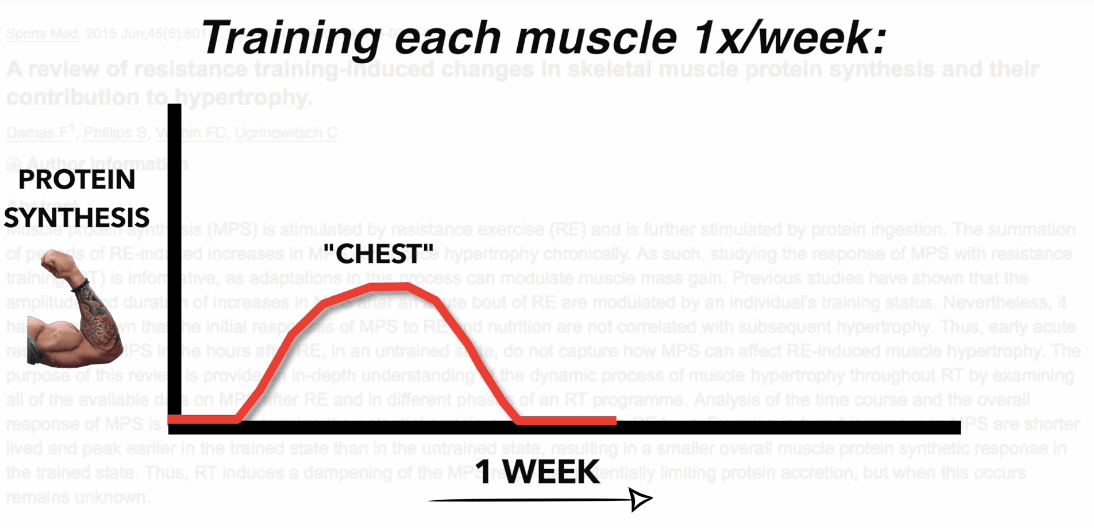
Whereas if you were train each muscle group too frequently, you would be interfering with the recovery process.
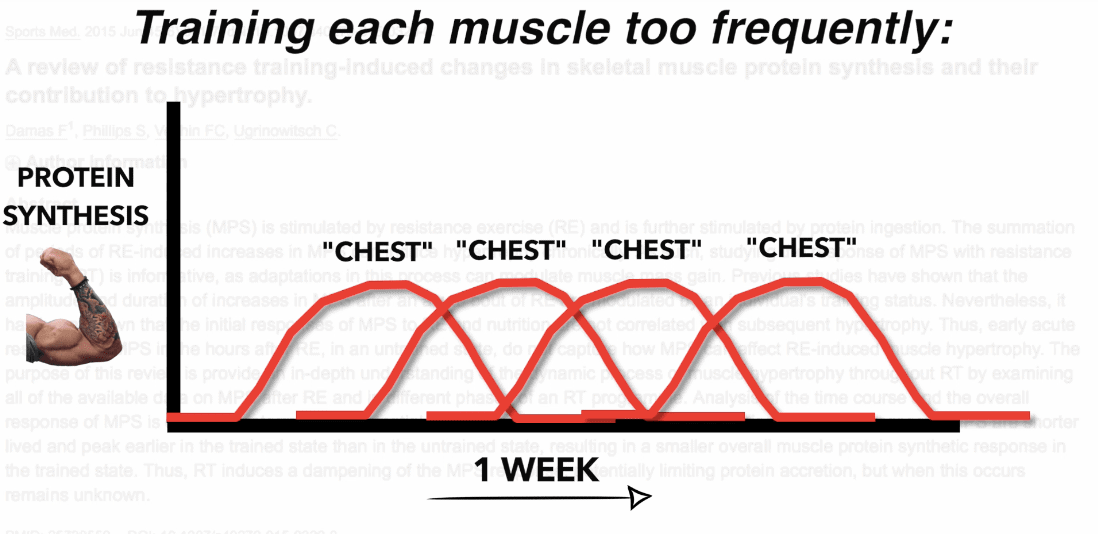
So by sticking to training each muscle group 2-3x/week for example:
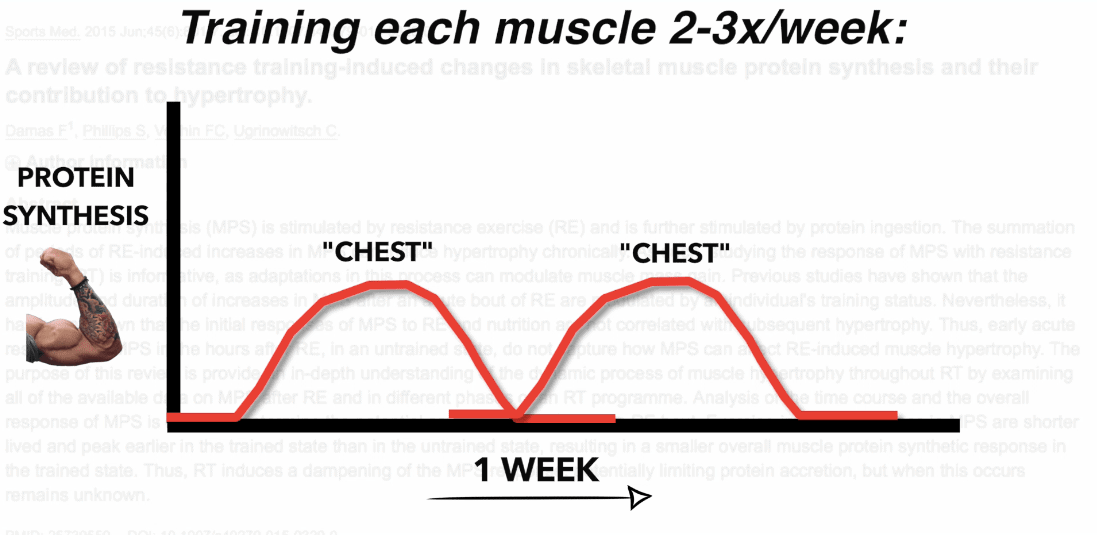
You’re able to maximize the protein synthesis response throughout the week while avoiding any interference with recovery given that your volume per session isn’t excessive.
...but even with this theory (and as with many things within this field) there are also a lot of unknowns that research is yet to iron out.
For instance, this very recent 2018 study by Gentil and colleagues came up with a very interesting finding that in a way contrasts what we previously discussed.
They found that:
When trained subjects who were previously using a 2x/week muscle training frequency for at least 4 months switched over to a 1x/week bro-split protocol, they saw significantly greater muscle growth over 10 weeks when compared to another group that stayed with the 2x/week muscle training frequency throughout.
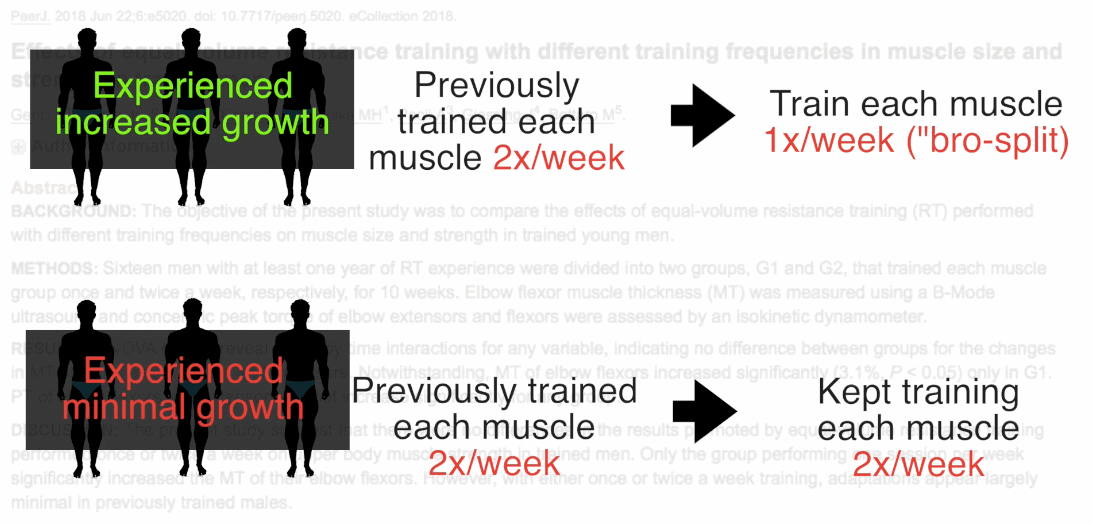
Now to be honest this wasn’t the best designed study and is yet to be replicated. But nonetheless it does provide the notion that for well-trained lifters at least, switching it up every now and then might provide a beneficial response. Which is something to keep in mind and possibly experiment with.
However, for most of you, I think it’s best to stick with the recommendations below since they’re based on a solid amount of research.
Practical Applications
We know that:
- Training a muscle group 2-3x/week is superior to 1x/week.
- Training at frequencies greater than this don’t seem to provide an added benefit unless you’re aiming to improve a specific lift for example.
Therefore, for the majority, you’d ideally want to use a workout split that:
- Accomplishes a 2 or 3x/week training frequency.
- Enables you to get in the adequate volume of 10+ weekly sets per muscle as discussed in my interview with researcher Brad Schoenfeld.
And you can do so with a variety of workout splits, but here’s a, 3 day, 4 day, 5 day, and 6 day split that are all good options to do so:
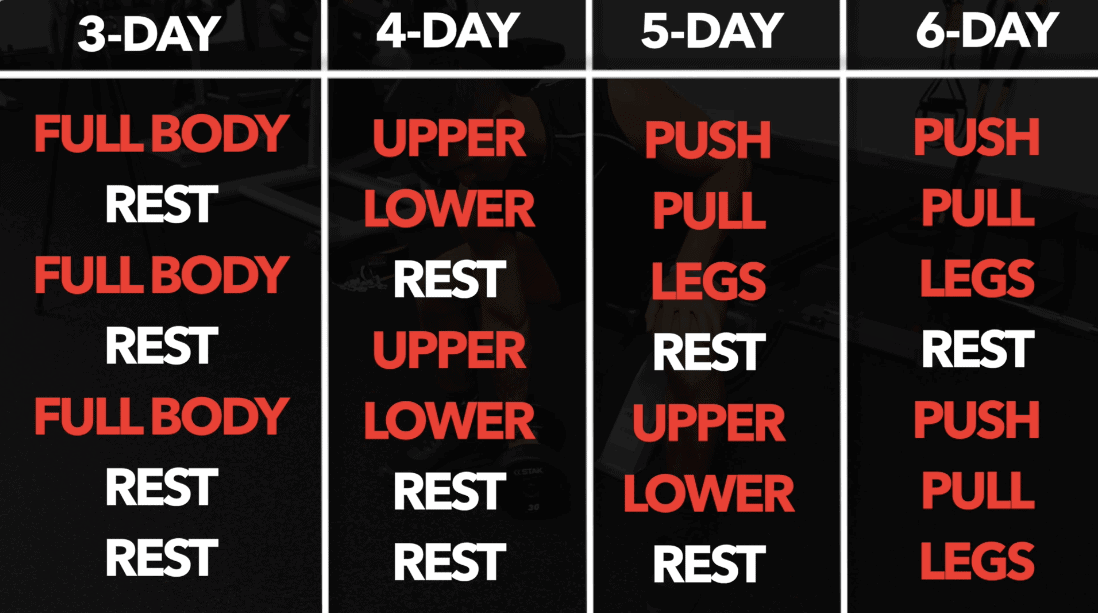
BUT! With all of that being said, it’s total weekly volume and adherence to your routine that are the more important factors when it comes to long term progress.
So if you find that a 1x/week training split or something other than what was discussed is more enjoyable for you and is something you’ll be more consistent with, then that’s what I’d stick with.
But overall, for the majority, sticking to the recommendations outlined earlier would likely be the best approach.
And if you're looking for an all-in-one program that takes all the research behind training into account, head on over to my courses page to find the best program for you.
Hopefully you learned a thing or two from this article. Please feel free to let me know if you have any questions down below. And give me a follow on Instagram , Facebook , and Youtube where I’ll be posting informative content on a more regular basis. Cheers!
And for those looking for a complete step-by-step program that uses science to show you how to properly train AND eat week after week to transform your body in the most efficient and injury-free way possible, then:
Click the button below to take my analysis quiz to discover the best program for you:
↓


